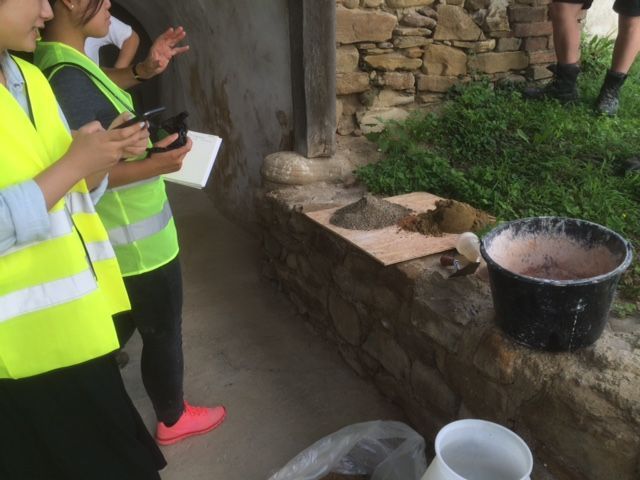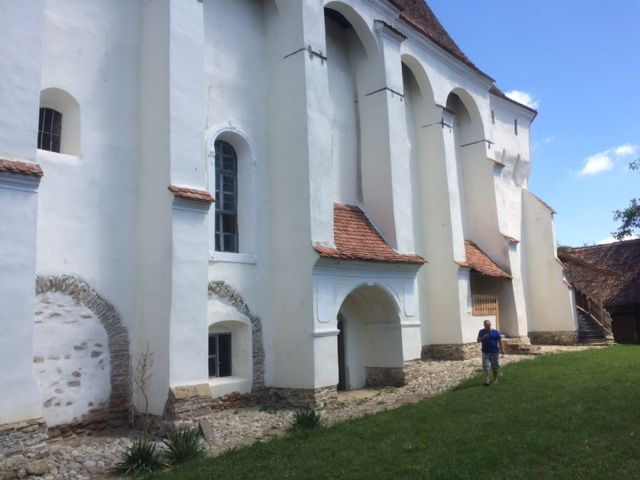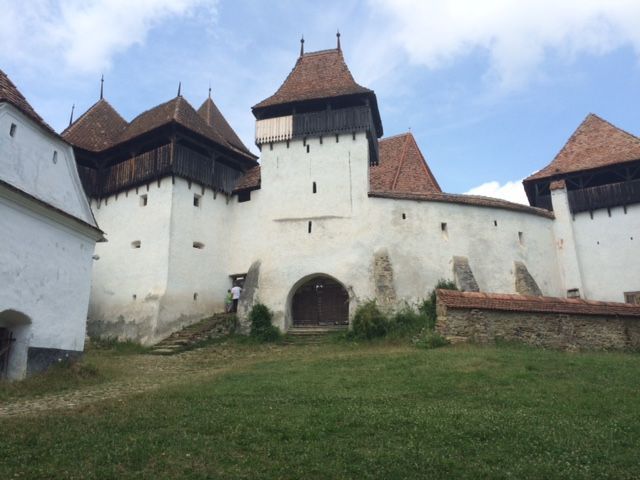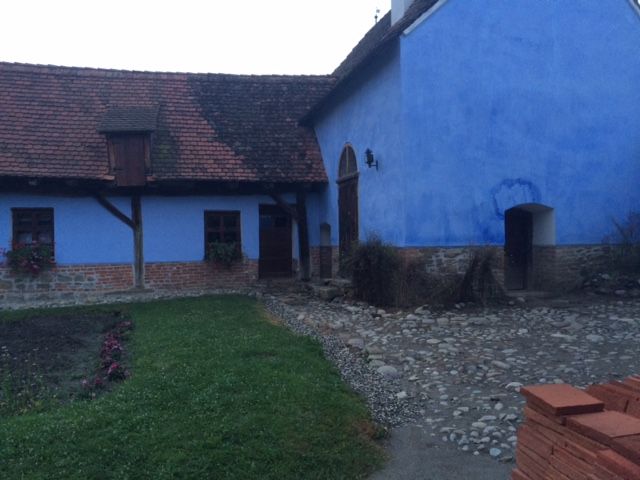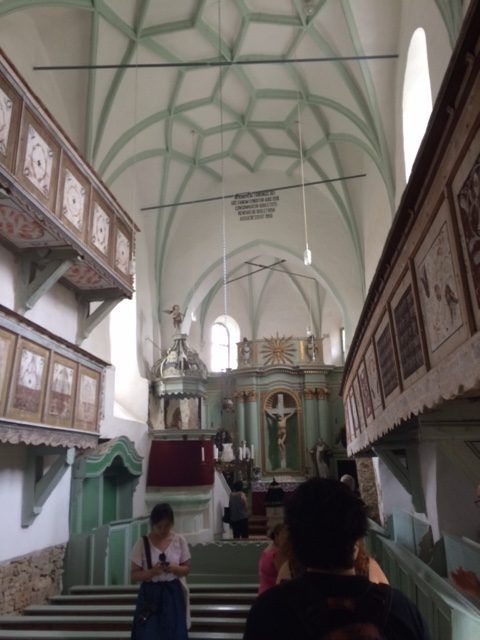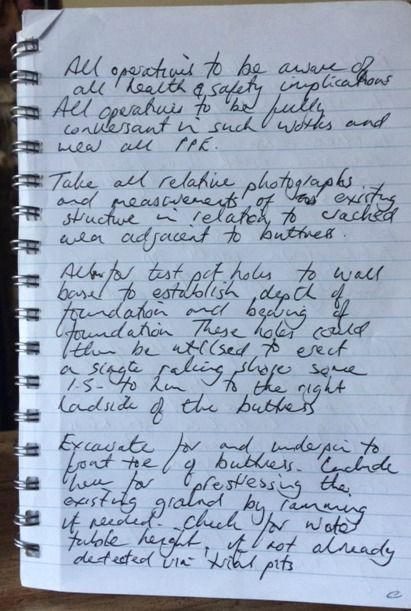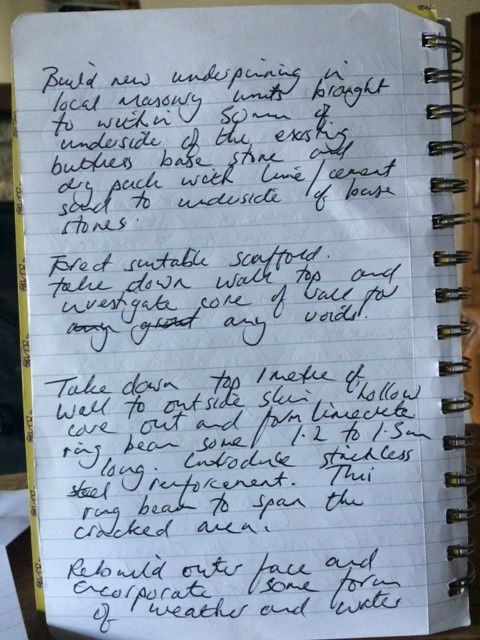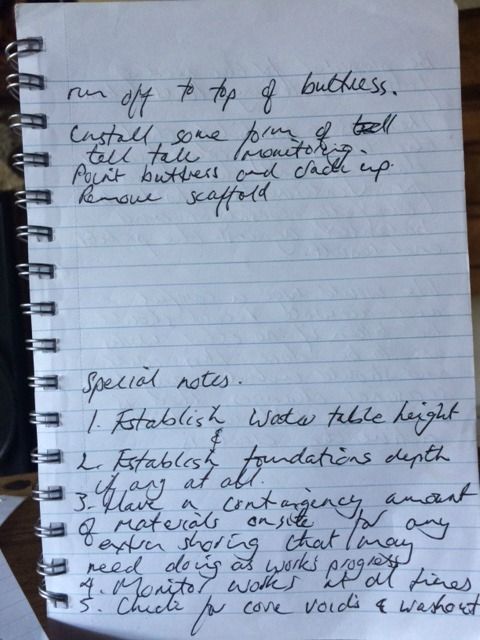In August 2015, along with eight others, I attended the inaugural Prince of Wales building conservation course at the World Heritage site of Viscri, Transylvania. This area is also known as the Saxon Triangle and has many medieval buildings and hamlets that have been largely untouched for hundreds of years.
We were very lucky to stay in Prince Charles’s own Saxon house (I even slept in his bed for the duration of the course). These houses are semi fortified in that each house had a walled entrance with large gates and a semi-subterranean cellar where at one time villagers would shelter from invading hoards. These hoards were not intent on occupation but collecting provisions as they passed through. In most instances villagers would have warning of their arrival and take shelter in the fortified church.
It was one of these churches in Bunesti where our programme of works was based.
Initially we were instructed in different conservation theories – both Romanian and British. In the UK we tend to conserve ‘as is’ and preference is given to keeping the original detail and material in situ at all costs. However the Romainians tend to knock off or remove the original detail and renew – matching the original. This way the skill sets are kept alive. I believe in both doctrines and would like to see a blend of both becoming more acceptable in the UK.
Our works involved small repairs to the fortified walls at Bunesti Church which involved hacking out, repointing works, stitch repairs and core grouting works. To this end I was asked to help with the training of the other students. These were trainee architects from the USA and the UK.
One highlight was explaining grouting techniques on Romanian national and local TV.
We also visited a number of other fortified churches, castle restorations and the medieval town of Sighioara. This is the home of Vlad the Impaler – better known as Count Dracular! Our visits also included watching presentations by local blacksmiths and brick makers.
To experience Transylvania before it inevitably changes was a unique experience and one I would encourage others to do. The country is just recovering from communism and has some very cosmoplitan cities but it also has some poor rural areas. These, almost by chance, have not suffered from the destruction of vernacular building stock seen elsewhere and buildings have been preserved using the cheapest and simpest means of building repairs.
The EU has given millions of euros in grants to repair historically important buildings but corruption and bribery has not seen this spent wisely. This can be as a great a threat as neglect.
One of our projects involved us specifying works for the Bunesti church warden to an area of the church wall. The specification was two-fold in that it would go towards an application for EU funding but would also show the difference in conservation idioms. As a contractor I know the importance of the avialble skill sets – it is no use over specifying and developing a very complicated scheme and not have the requisite local craftsmen or women avilable.
See below some of my site notes:We were tasked to rebuild a 16th Century boundary wall to the Old Lodge Malton, as featured on the Time Team television programme. The wall which was ransacked by Robert the Bruce in 1322.
After a competitive tendering process we were successful with initial works being responsible for a method of accurately recreating this as built wall.
I was able to devise a method that satisfied both the English Heritage scheduled monuments inspector and Ryedale District Council's conservation officer while being workable on site. It involved a series of photos using grids showing the position in the wall and its height from a ???
Walls were all built using some existing stone and replacement Birdsall Calcareous Grit stone, all built in lime mortars. Again I advised using rough core work to the wall top instead of a vulnerable coping stone. We also incorporated a bee skep.
During the course of the works and further to an archaeological watching brief his team found an original stone calvert and the corner of the original Castle tower base, something that the Time Team are unable to do during their investigations.
We are awarded a second phase of the work which included taking down and rebuilding previously repaired sections of the wall.
Learn more about the history of Malton Castle.
All Rights Reserved | Stephen Pickering Building Services Ltd


